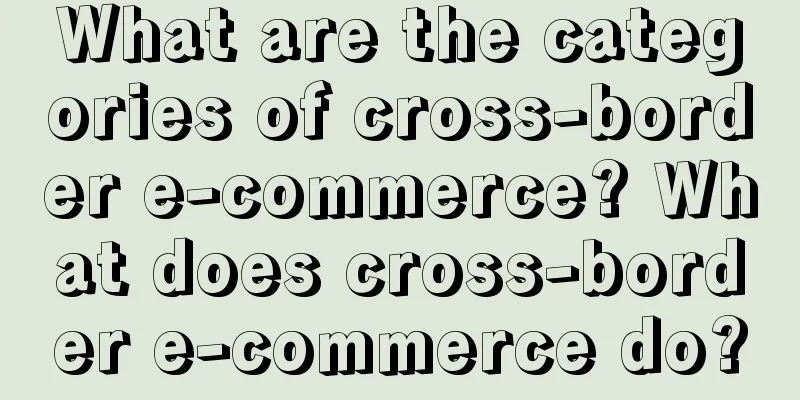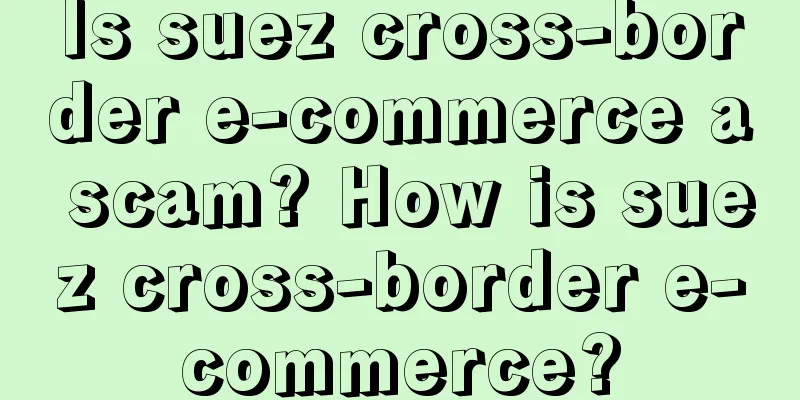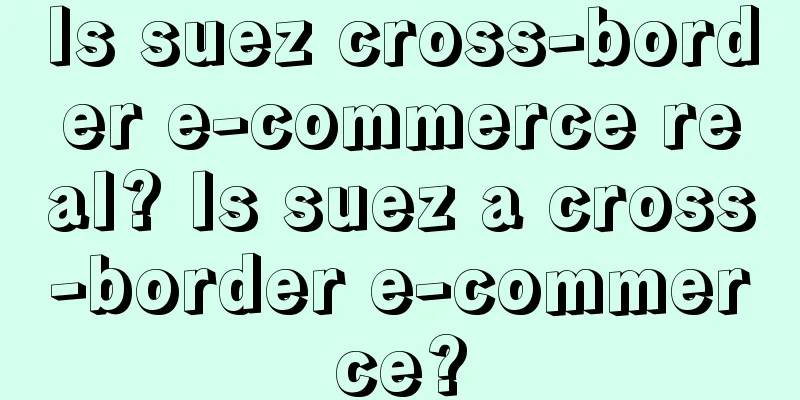What are the categories of cross-border e-commerce? What does cross-border e-commerce do?

|
With the advancement of globalization, cross-border e-commerce has gradually emerged as a new type of international trade model. Different from traditional international trade, cross-border e-commerce covers multiple dimensions of business. This article will explore the classification of cross-border e-commerce in depth to help readers have a more comprehensive understanding of this booming industry. 1. What does cross-border e-commerce do? Cross-border e-commerce refers to a business model that enables sellers and buyers to trade goods across national borders through the Internet platform. Its main businesses include: International trade: Conduct international trade of goods through cross-border e-commerce platforms to achieve international sales of goods. Logistics services: Provide global logistics services, including international transportation, customs clearance, delivery and other links to ensure the smooth circulation of goods. Payment service: Provide convenient payment services for cross-border transactions and support currency settlement in different countries and regions. Market expansion: Assist sellers to expand their markets globally and attract more international buyers. Overseas warehousing: Establish warehousing systems in various countries to achieve fast delivery of goods and localized services. After-sales service: Provide global after-sales service, including return, exchange, repair, etc. 2. Classification of cross-border e-commerce According to different business models and business scopes, cross-border e-commerce can be divided into several categories: B2C (Business to Consumer): The B2C model refers to merchants selling goods directly to consumers. In cross-border e-commerce, some well-known B2C platforms such as Amazon and AliExpress belong to this category. C2C (Consumer to Consumer): The C2C model refers to transactions between individuals, and the platform provides transaction matching and payment services. eBay is a representative C2C platform in cross-border e-commerce. B2B (Business to Business): The B2B model refers to transactions between businesses, mainly serving wholesale and procurement. Alibaba's international site is a typical B2B platform. O2O (Online to Offline): The O2O model achieves offline transactions by attracting traffic online. In cross-border e-commerce, some online platforms promote product sales by cooperating with offline physical stores. D2C (Direct to Consumer): The D2C model refers to a brand selling directly to consumers and building a brand image through its own channels. This model is gradually gaining attention in cross-border e-commerce. F2C (Factory to Consumer): The F2C model refers to factories selling products directly to consumers, bypassing middlemen. This model is usually implemented through private brands and independent sites. C2B (Consumer to Business): The C2B model refers to consumers making demands and companies providing customized products or services based on the demands. This model is more prominent in some areas of customized goods. M2C (Manufacturer to Consumer): The M2C model refers to manufacturers selling directly to consumers. This model is implemented through private brands and independent sites, which is different from the traditional channel form. The above classifications are not absolutely independent. Many cross-border e-commerce platforms may cover multiple models and form a diversified business structure. |
<<: Why did Amazon's natural traffic suddenly drop? How can I increase Amazon's natural traffic?
Recommend
Are young people addicted to live broadcasts of opening clams? The tricks of buying pearls are complicated!
Recently, live broadcasts of pearls opening have b...
Without working for ten years, you can’t come up with such a touching marketing case.
This article covers the actual operations of many ...
This year's Double Eleven, we also began to pay attention to "his marketing"
During this year's Double 11 Shopping Festival...
What is the traffic on Amazon? Introduction to the four major traffic types
As the Amazon platform continues to grow, more and...
Does Shopee support WeChat Pay? What payment methods does Shopee support?
Shopee provides users with a wide range of product...
30 years of Internet idolization: a history of the demise of Internet celebrities
On the Internet, there is never a shortage of new ...
Will WeChat update its private domain killer? Will it revitalize community operations? Will mini programs usher in a rebirth?
WeChat recently fully launched an innovative featu...
It’s time for Moutai to launch sauce-flavored mooncakes
This article takes Moutai's brand and market e...
Convenience stores are collaborating, even if Ultraman comes, it won’t work
The IP convenience store cooperative operation mod...
Can Shopee Brazil pictures have Chinese characters? What are the picture requirements?
Brazil is the largest country in South America, so...
Does Amazon need to declare customs when sending FedEx? How long does it take?
If you purchase goods on Amazon's cross-border...
Latest announcement: WeChat Mini Store begins upgrading to WeChat Mini Store
In the wave of digitalization, the upgrade of WeCh...
Browsing Tik Tok chat
The "eyeball economy" is prevalent on sh...
Meituan is busy going overseas, JD.com starts delivering food
As competition in China's e-commerce sector in...
Going to the big market, eating a big banquet, short videos show "the temptation to go home"
The Spring Festival is approaching, and on short v...









